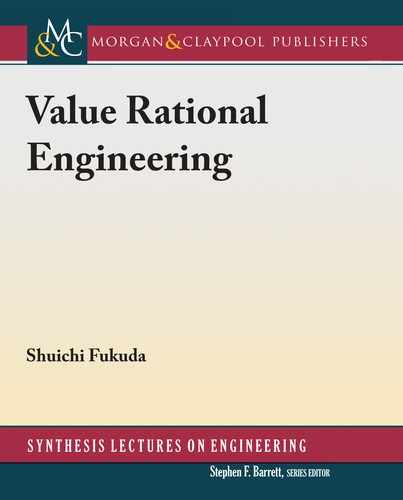Book Description
Early in the 20th century, our world was small and closed with boundaries. And, there were no appreciable changes. Therefore, we could foresee the future. These days, however, we could apply mathematical rationality and solve problems without any difficulty.
As our world began to expand rapidly and boundaries disappeared, the problem of bounded rationality emerged. Engineers put forth tremendous effort to overcome this difficulty and succeeded in expanding the bounds of mathematical rationality, thereby establishing the "Controllable World."
However, our world continues to expand. Therefore such an approach can no longer be applied. We have no other choice than "satisficing" (Herbert A. Simon's word, Satisfy + Suffice).
This expanding open world brought us frequent and extensive changes which are unpredictable and diversification and personalization of customer expectations. To cope with these situations, we need diverse knowledge and experience. Thus, to satisfy our customers, we need teamwork.
These changes of environments and situations transformed the meaning of value. It used to mean excellent functions and exact reproducibility. Now, it means how good and flexible we can be to adapt to the situations. Thus, adaptability is the value today.
Although these changes were big, and we needed to re-define value, a greater shift in engineering is now emerging. The Internet of Things (IoT) brought us the "Connected Society," where things are connected. Things include not only products, but also humans.
As changes are so frequent and extensive, only users know what is happening right now. Thus, the user in this Connected Society needs to be a playing manager—he or she should manage to control the product-human team on the pitch.
Moreover, this Connected Society will bring us another big shift in engineering. Engineering in this framework will become Social Networking, with engineering no longer developing individual products and managing team products.
The Internet works two ways between the sender and the receiver. Our engineering has ever been only one way. Thus, how we establish a social networking framework for engineering is a big challenge facing us today. This will change our engineering. Engineers are expected to develop not only products, but also such dream society.
This book discusses these issues and points out that New Horizons are emerging before us. It is hoped that this book helps readers explore and establish their own New Worlds.
Table of Contents
- Preface
- Acknowledgments
- Introduction
- Big Shift in Engineering
- Value and Rationality: Traditional Engineering Definition
- Increasing Difficulty of Recognizing Product Quality Improvement
- Value and Rationality: Definitions in Other Fields
- Design–Another Form of Decision Making
- Importance of ``Self''
- Increasing Importance of Process Value
- Reliability to Trust
- Individual Products to Team Products–Individual Play to Team Play
- Strategy: Yesterday and Today
- Modularization: Product-Based to Process-Focused
- Sectors of the Economy
- Sharing Society
- The Connected Society
- New Horizons Are Emerging
- References
- Author's Biography
- Blank Page (1/3)
- Blank Page (2/3)
- Blank Page (3/3)
